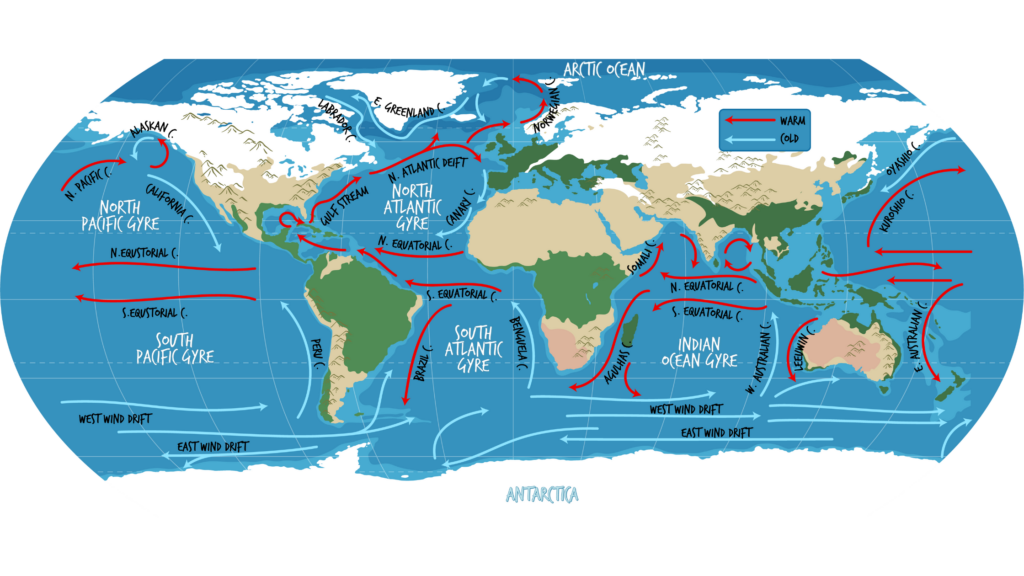
Ocean currents affect climates on their neighbouring landmasses. Currents are a continuous and directed movement of the ocean water. This happens through forces acting on the water. Things such as differences in salinity, the waves breaking, temperature, the wind or even the Coriolis effect. Many factors contribute to the direction of a current. Things such as depth, the nature of the shoreline and interaction with other currents.
Currents travel thousands of kilometres. Establishing a global conveyer belt that brings about different climatic conditions across the world. Currents either act at the water’s surface or deep below (at least 300 meters). Depending on their cause, currents move horizontally, planar to the water’s surface. Or vertically, up and down within the body of water. They can be influenced by bordering land masses, the topography or the shape of the ocean basin.
How ocean currents affect climate
As the horizontal currents are moving south or northwards. They move water at temperatures at odds with the air above. This displaced water affects the air, by warming or cooling it. Thereby transferring the same effect to the land when the air blows across it. This is how ocean currents affect climate.
Warm and cool ocean currents
Cold currents are large masses of cold water that move towards the equator. Flowing from higher altitudes to lower ones. They absorb the heat they receive in the tropics. As a result, they cool the air above them.
Warm currents are large masses of warm water moving further away from the equator, at higher temperatures. They form when salty cold water becomes heavy and sinks. Forcing warm and lighter water to move in the opposite direction. The strength of these currents depends on several things. Salinity, the Coriolus effect, the topography and the wind. Bringing cold water to the surface of the earth from the depths. Consequently, forcing away the original surface water.
Atlantic and Pacific climates
Land bordering the Pacific ocean tends to experience more consistently warm weather. The Pacific’s current systems don’t interact much with polar waters. Thanks to landmasses and the Earth’s rotation.
However, the Atlantic’s current systems do interact with Arctic waters. Causing more varied weather on its neighbouring land masses. Warmer summers potentially. Absolutely resulting in colder winters.
The Gulf Stream and the North Atlantic Drift
The gulf stream is a current system across the Atlantic. Warm water from the Gulf of Mexico and other equatorial destinations rises. As it rises it flows across the Atlantic towards the UK. Passing along the North American east coast on the way. This warm water warms the air it passes by. This current in particular affects our climate. The Gulf Stream and North Atlantic Drift are responsible for the UK’s milder winters. When you consider we are further north and closer to the pole than places such as Fargo or Winnipeg. Yet we experience consistently warmer winters than them. They have lows of roughly -15°C compared to the UK’s 0°C. As you can see, it’s a huge difference!
